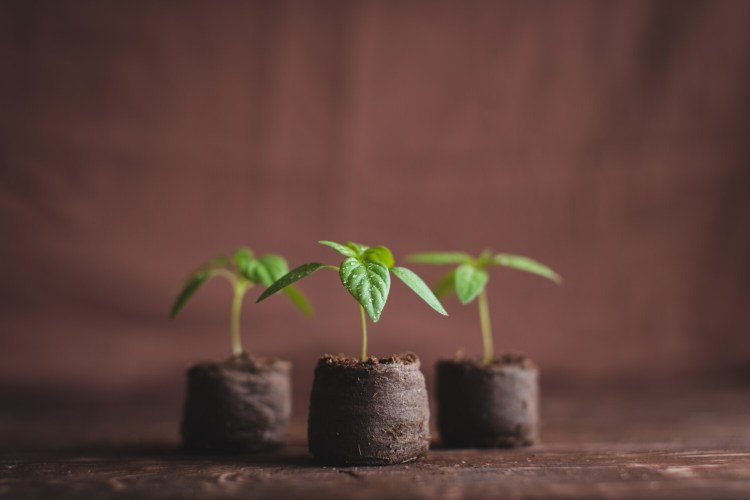For the past decade or more, ecologically-conscious gardeners have been reducing the amount peat moss they use in their gardens, although the change hasn’t been fast or easy.
I wasn’t clear on all the reasons why gardeners should avoid peat until Tom Witwicki, president of the Cumberland County Master Gardeners Association, spoke to the Cape Elizabeth Garden Club last month about why using peat harms the environment and, just as important, how to avoid using it.
My wife Nancy and I have no recollection of buying bales of peat moss for use in our outdoor gardens and pots, but many people have done so since the early 1900s. Peat holds onto water and loosens the soil, so it improves growing conditions for all kinds of plants – lawn grass, perennials, shrubs and vegetables.
What we have used – and still have on hand in our basement – is Pro-Mix, a peat-based potting mix that is regularly used as the planting medium for vegetable and flower seedlings, as well as for potted plants of all kinds.
That is probably the last Pro-Mix we will buy.
Why is using peat bad for the environment, particularly in leading to climate change?
Here is some background first.
The United States uses 1.4 million metric tons of peat a year, with 70 percent of it coming from sphagnum-moss bogs in Canada, Witwicki said. The peat that is being mined now is from bogs formed during the last ice age.
Peat bogs are major carbon sinks, meaning that they contain carbon. But when peat is decomposed in gardens or burned – peat is used for fuel in parts of Europe – it releases carbon dioxide, which helps trap heat near the earth’s surface.
Some other statistics from Witwicki: One cubic foot of peat contains as much carbon as seven pounds of coal. Peat bogs cover only 3 percent of the earth’s land mass, but hold 30 percent of land-based carbon, more than all the forests in the world. Britain will ban peat-farming beginning in 2024.
Witwicki mentioned that the garden plants from member gardeners sold at the annual Cumberland County Master Gardeners used no peat – which is considered a milestone for the major sale. He did say that calling it a peat-free sale requires an asterisk, because while the Master Gardeners used no peat in potting up their own plants, some seedlings sold at the sale may have been grown in a potting mix including peat.
So if we can’t use Pro Mix or other products containing peat, what should we use? The go-to choice at the moment is coir, which is made from leftover coconut shells after the coconut is processed to make various food products. Coir has water-holding capacity similar to peat.
One problem is that coir is sold in fairly large bricks, which are just about impossible to cut unless you have a band saw. Witwicki has one, but I don’t. The bricks have to be rehydrated, and if you are using an entire brick (ours weighed 11 pounds), it will take almost a week for the coir to soak up enough water to be used. The easiest, and I use that word advisedly, way to do it is to put the brick in a wheelbarrow and fill the wheelbarrow with water. Once the coir has soaked up enough water, other ingredients must be added to it. To make peat-free potting mix, take seven parts of rehydrated coir, two parts of perlite or vermiculite and two parts of compost or worm castings.
Perlite is mined out of volcanic rock and helps soil hold water. Some people – include Nancy in that group – don’t like it because it is white and doesn’t look like soil. Vermiculite is a silica material, and is brown or beige.
A recipe for a soilless seed mix is eight parts coir, three parts worm castings and four parts perlite.
Some premixed potting mixes use coir. The most popular is called Mother Earth. But you’d probably have to buy them online. I’ve only rarely seen them locally.
I mentioned earlier that peat bricks are used for fuel in Europe. Nancy and I still have two leftover peat bricks after a friend gave us a dozen of them more than a decade ago after a trip to Ireland. We burned a few, but preferred the oak that we got from fallen branches in our yard.
Maybe the peat bricks will become heirlooms.
Tom Atwell is a freelance writer gardening in Cape Elizabeth. He can be contacted at: tomatwell@me.com.
Comments are not available on this story.
Send questions/comments to the editors.



